
A Short Pilgrimage to Yashima
Yashima
The island of Shikoku is known for the
Shikoku Henro or Shikoku Junrei,
the Shikoku Pilgrimage.
It's a trek through 88 Buddhist temples associated with
the monk Kūkai who founded the
Kōya-san
mountaintop temple complex.
The standard walking route is about 1,200 kilometers long,
taking one to two months to complete.
That means 20 to 40 kilometers per day,
an impressive pace.
One of the temples, Yashima-ji,
is close to Takamatsu.
It's the 84th temple in the series of 88,
although there's no need to visit them in order.
The Yashima peninsula is just east of Takamatsu.
Amazon
ASIN: 081394211X
By Train to Yashima
Yashima is on the eastern edge of the city of Takamatsu. But this is Japan, so there are multiple transport options. Both JR and a private railroad provide service at Yashima.
I'm taking the easy way, the JR Kōtoku line from the main station, closer to the guesthouse.
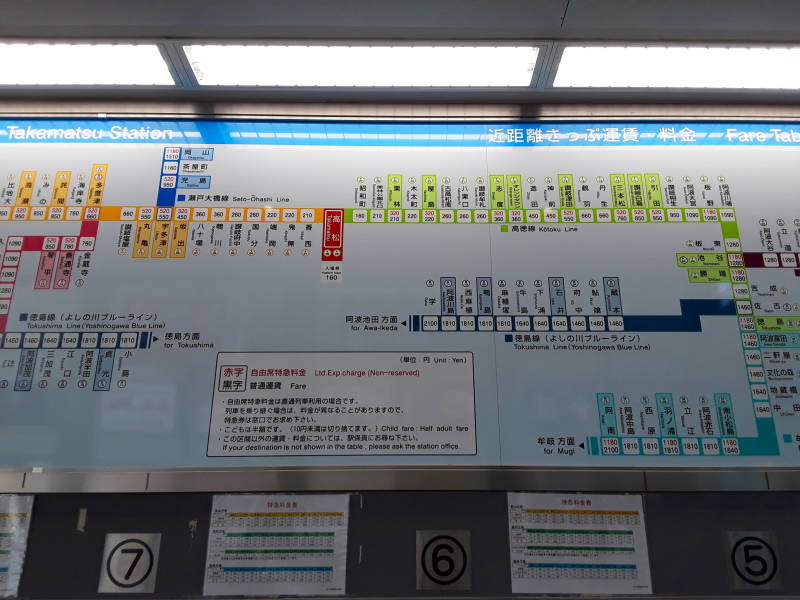
I found the Yashima station on the map and bought my ticket. The ticket was ¥220, Yashima will be the fifth stop for the local train I will take.

Now to pass through the gates to reach the platform.

Here's my train, the 10:02 local to Tokushima. From here it's just 9.5 km to Yashima.
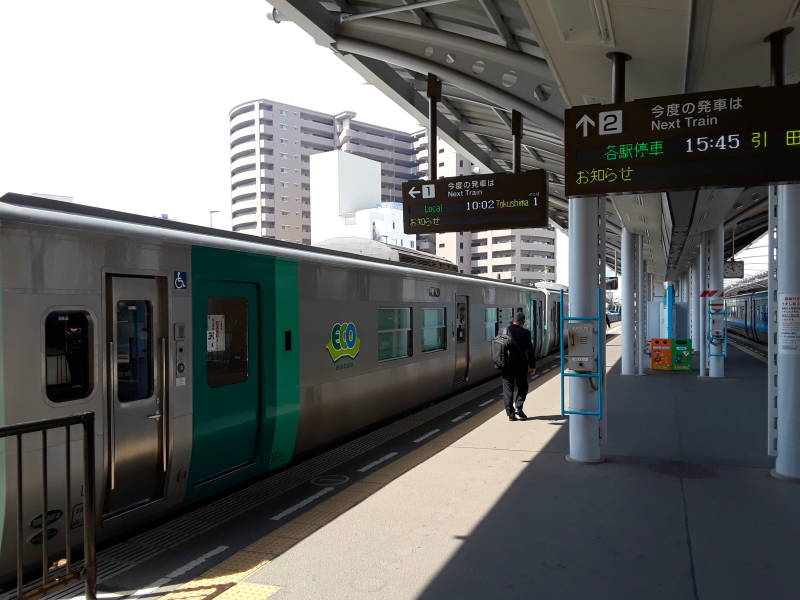
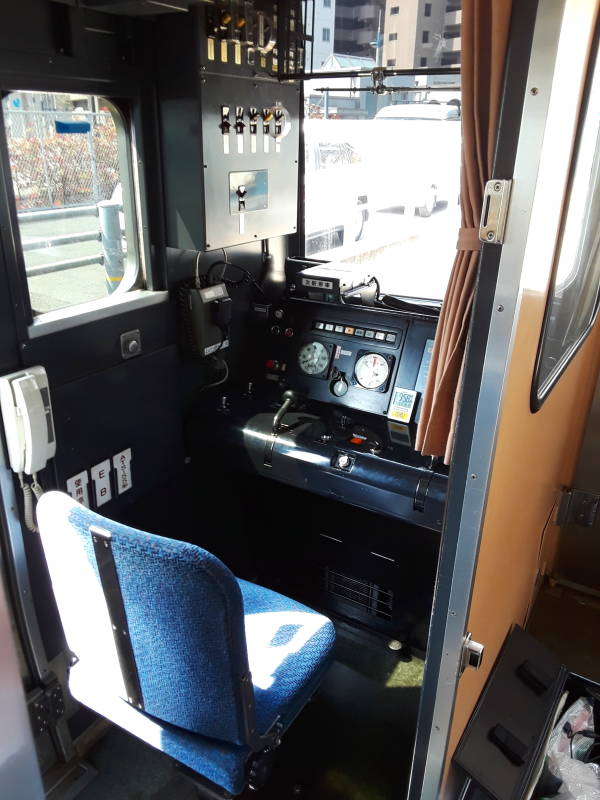
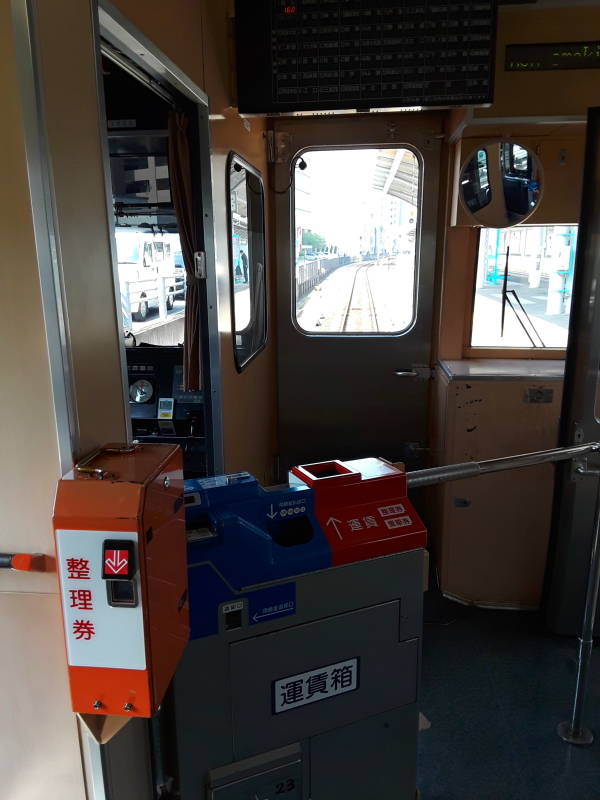
Frequent trains provide many options. I have arrived at Yashima.

From the elevated walkway at the station, you're looking at the end of the Yashima peninsula. It's an elongated volcanic plug, a little over 290 meters high.

Japan is a volcanic archipelago, so there's a lot of up and down. You can climb a long staircase to the top. Or, take the bus that's synchronized to the trains.
Yashima-ji
The Yashima temple was first opened in 754 by Ganjim, a Chinese priest of the Ritsu sect. Kuhatsu, one of his followers, was the first chief priest.
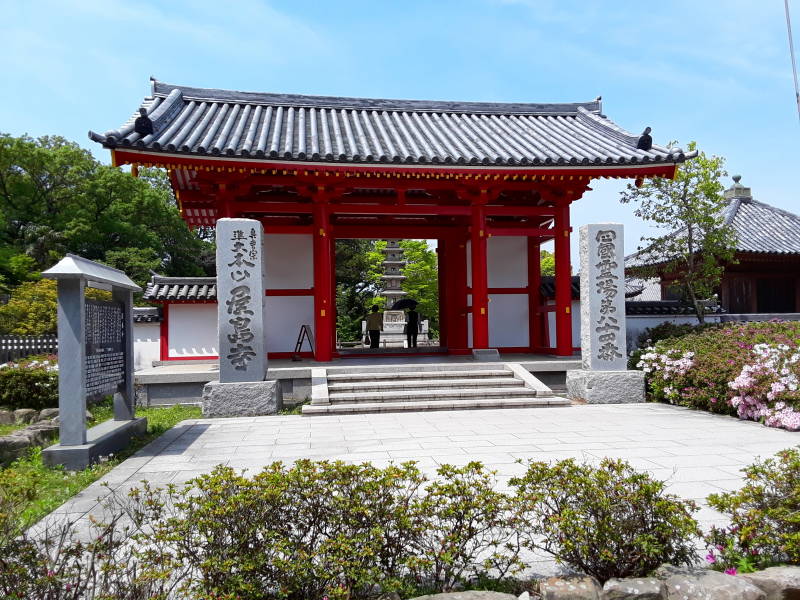
Kūkai, known posthumously as Kōbō, had founded the Shingon sect of Buddhism at the Kōya-san mountaintop complex on Honshū, east of Shikoku. He converted this and other Shikoku temples to the Shingon sect.
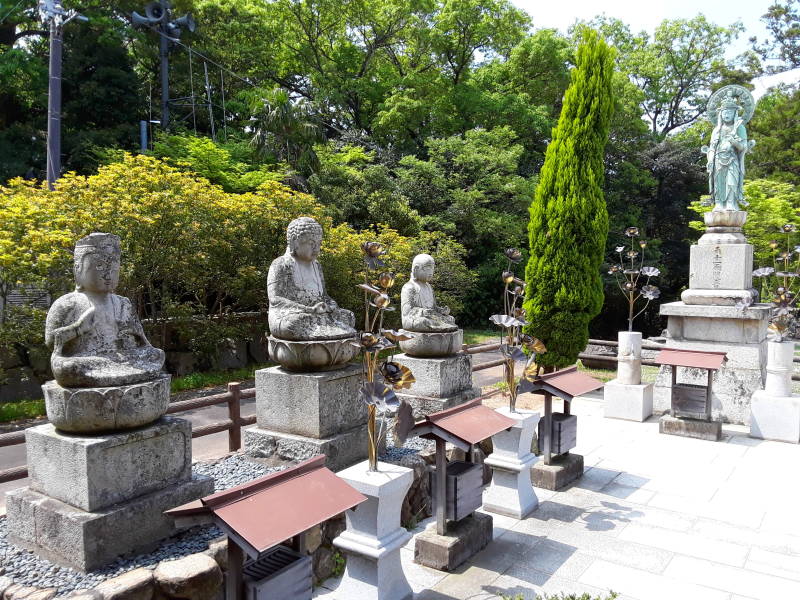
In the late 1100s there was a decisive battle here between the Genji and Heike clans.
Here's a pilgrim doing the 88 Temple trek. He's o-henro-san, a more respectful form of henro or "pilgrim". It's sort of like "Mr Pilgrim Sir".
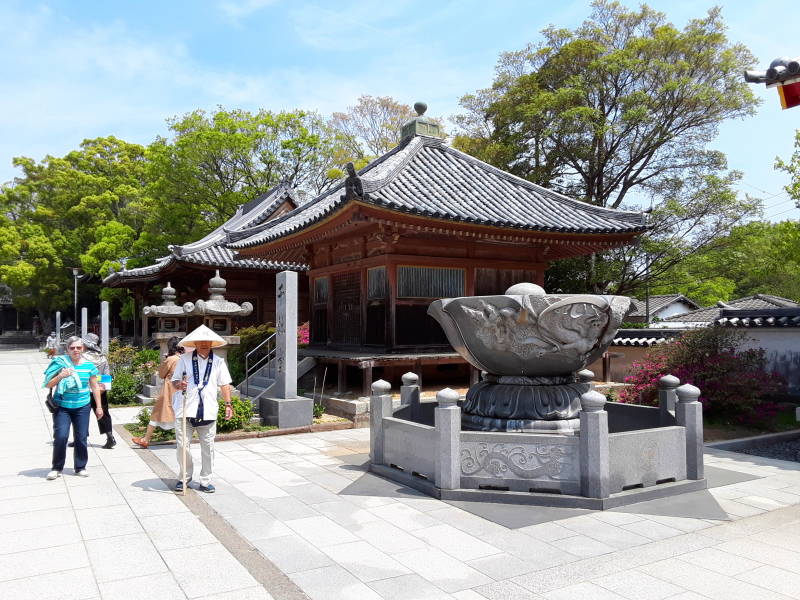
A pilgrim typically wears white clothing, the oizuru or white shirt, with a suge-kasa or conical hat, and carries a kongō-zue or walking stick.
One also carries a zuda-bukuro or bag containing juzu or prayer beads, a nōkyō-chō or booklet to collect a stamp at each temple, incense sticks and coins for offerings, and a book of sutras.
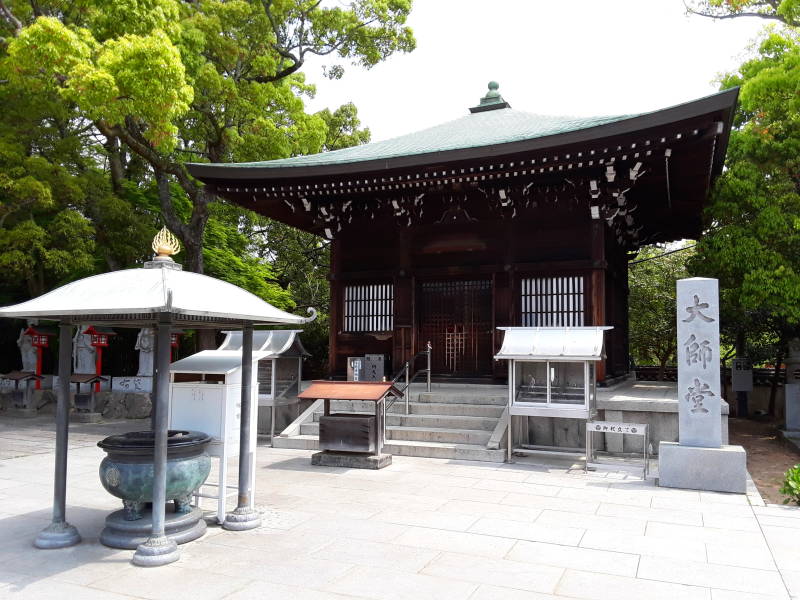
in Japan
As usual, there's at least one Shintō shrine at this Buddhist temple complex.
The Chinese Book of Liang recorded in 635 that five Buddhist monks from Gandhāra had visited Japan in 467. Buddhism wasn't initially a practical movement. For its first few centuries in Japan, Buddhist temples were staffed by educated priests who prayed for the prosperity of the nation and the Imperial house. Buddhism wasn't for the masses.
Buddhismin Japan
Uneducated, unordained, and unofficial "people's priests" ministered to the common people. They practiced a combination of Daoist and Buddhist philosophy mixed with elements of the native shamanism that had been the origin of Shintō.
Buddhism and Shintō became blended, as sanctioned by shinbutsu-shūgō, the idea that a Shintō kami could manifest as a Buddhist bodhisattva (or bosatsu in Japanese). Buddhist temples hosted Shintō shrines, and vice-versa.
Japanesecosmology
Formalized Shintō was associated with the Emperor, descended from the deities who created the Earth. Buddhism became associated with the Shōgun and the samurai, the military leaders and warriors who took practical control of Japan.
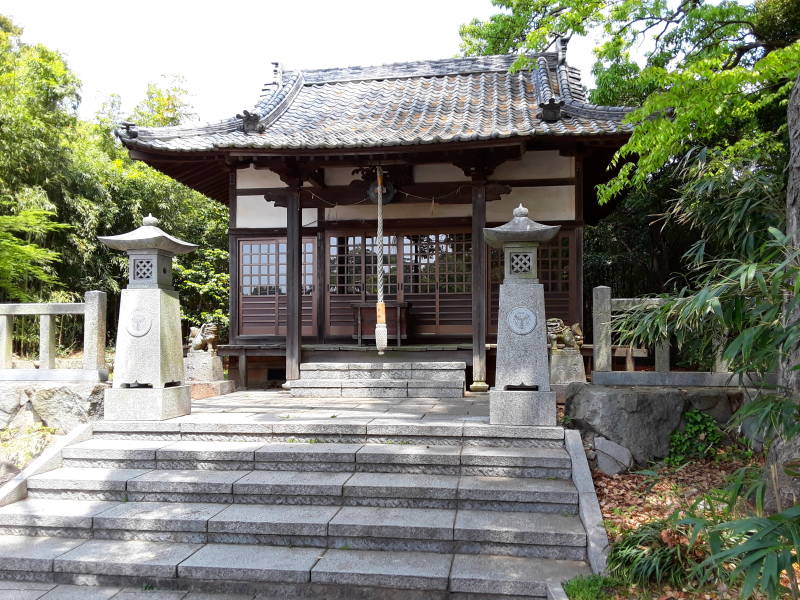
The hondō is the main temple at a complex. The central image in this hondō is the goddess of mercy called the Senju Kannon or the Thousand-Handed Kannon.
A tightly packed series of torii or vermillion gates leads to another Shintō shrine alongside the hondō.
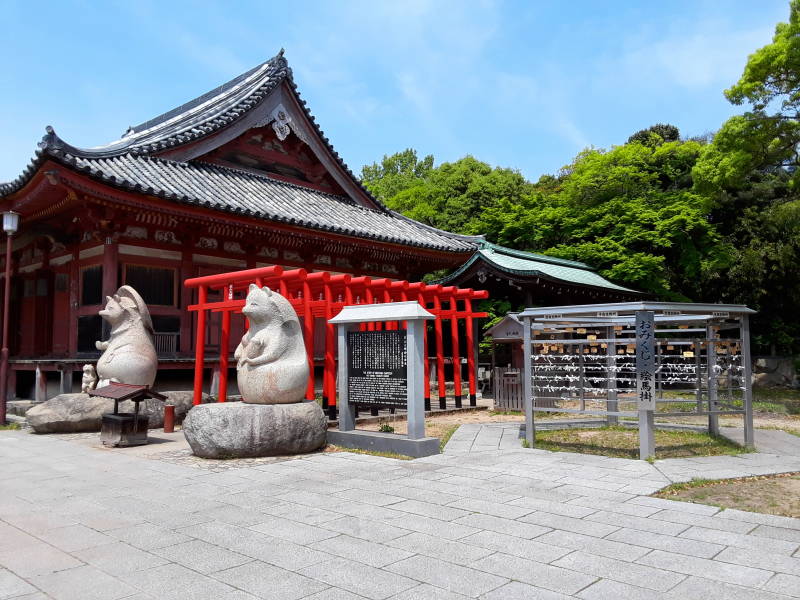
And, as you see from the statues, there's the folklore of the Yashima badger. From the sign you see above:
The story of Minoyama Daimyozin
The Yashima Tasaburō Badger
In the old days the grand priest Kōbō [that is, Kūkai] opened the 88 pilgrimage temples on Shikoku. He lost his way in foggy Yashima and met an old man wearing a straw rain coat, who guided him to the peak of the mountain.
It is believed that the old man was the figure of the Yashima Tasaburō badger's metamorphosis.
The Yashima Tasaburō badger is noted for being one of 3 badgers in Japan, together with the Danzaburō badger of Sado island and the Shibaemon badger of Awaji island.
It was the messenger of the Senju Kannon or the Thousand-Handed Kannon found in the main hall. Enshrined preciously because he did a lot of goodness as the tutelary god and was respected as the general head of badgers in Shikoku. The legendary skill of the sophisticated metamorphosis stood unchallenged throughout Japan.
The Yashima Tasaburō badger was also considered to be a monogamist and is respected as a god of peaceful families, marriages, and the restaurant business.
Believers who wish to have babies and good luck visit the Yashima Tasaburō badger from all over Japan.
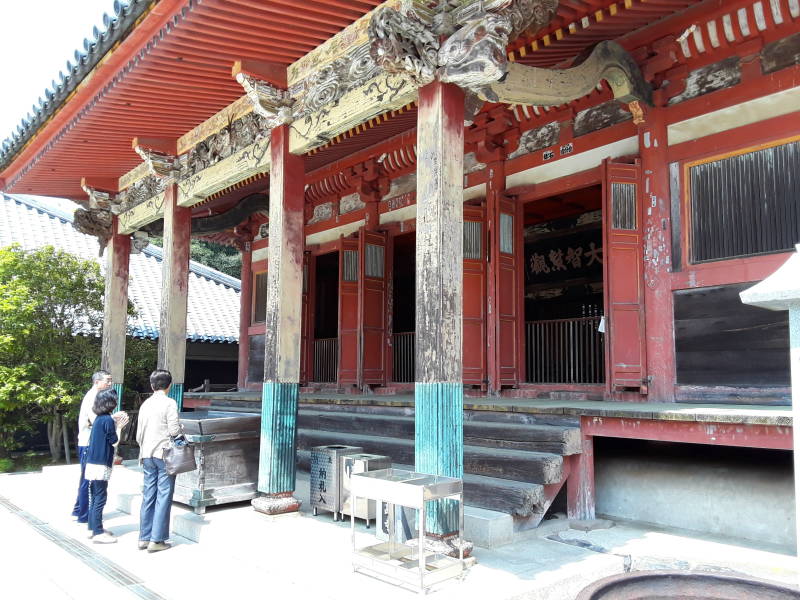
The pilgrim washes before visiting the Hondō, then offers coins, incense, and osame-fuda or name slips.
The pilgrim chants the Heart Sutra, then the mantra of the main image, and then the Kōmyō Shingon or Mantra of Light.

Heart Sutra
The Heart Sutra, Prajñāpāramitā Hṛdaya Sūtra or "The Heart of the Perfection of Wisdom" in the original Sanskrit, is the most frequently recited text in Mahāyāna Buddhism. There is a short version and a long version, the short version is the more popular one in East Asian schools of Buddhism. One English translation (CC0 1.0) is:
When अवलोकितेश्वर or Avalokiteśvara Bodhisattva was practicing the profound Prajñāpāramitā, he illuminated the Five Skandhas and saw that they were all empty, and crossed over all suffering and affliction.
"Śāriputra, form is not different from emptiness, and emptiness is not different from form. Form itself is emptiness, and emptiness itself is form. Sensation, conception, synthesis, and discrimination are also such as this. Śāriputra, all dharmas are empty — they are neither created nor destroyed, neither defiled nor pure, and they neither increase nor diminish. This is because in emptiness there is no form, sensation, conception, synthesis, or discrimination. There are no eyes, ears, nose, tongue, body, or thoughts. There are no forms, sounds, scents, tastes, sensations, or dharmas. There is no field of vision and there is no realm of thoughts. There is no ignorance nor elimination of ignorance, even up to and including no old age and death, nor elimination of old age and death. There is no suffering, its accumulation, its elimination, or a path. There is no understanding and no attaining.
"Because there is no attainment, bodhisattvas rely on Prajñāpāramitā, and their minds have no obstructions. Since there are no obstructions, they have no fears. Because they are detached from backwards dream-thinking, their final result is Nirvāṇa. Because all buddhas of the past, present, and future rely on Prajñāpāramitā, they attain Anuttarā Samyaksaṃbodhi. Therefore, know that Prajñāpāramitā is a great spiritual mantra, a great brilliant mantra, an unsurpassed mantra, and an unequaled mantra. The Prajñāpāramitā Mantra is spoken because it can truly remove all afflictions. The mantra is spoken thusly:
gate gate pāragate pārasaṃgate bodhi svāhā
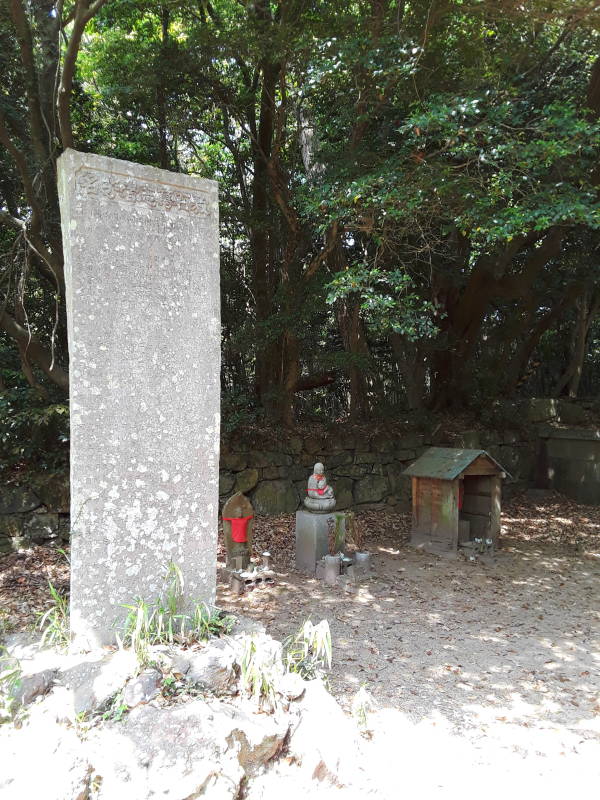
Some of the shrines are quite small.
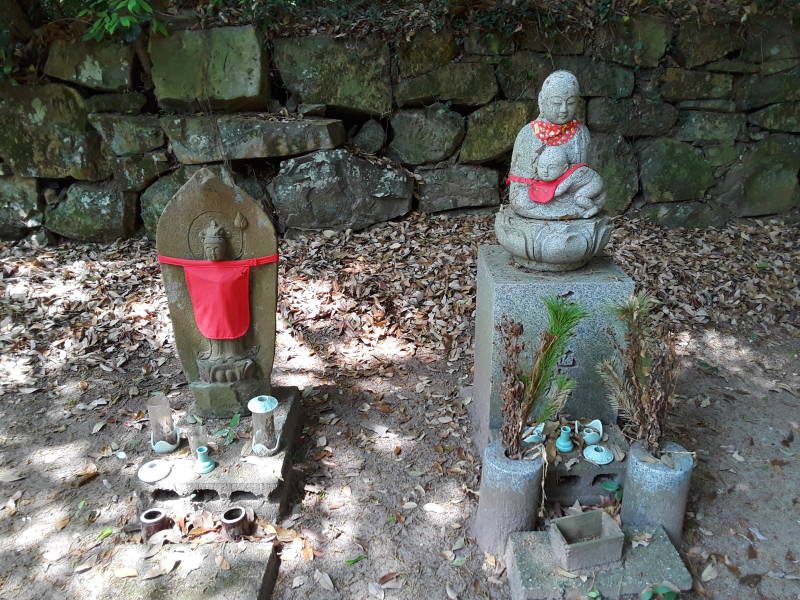
Walking Through Yashima
It's about two kilometers from the temple complex to the end of the path, which loops around the 282 meter peak of the peninsula.

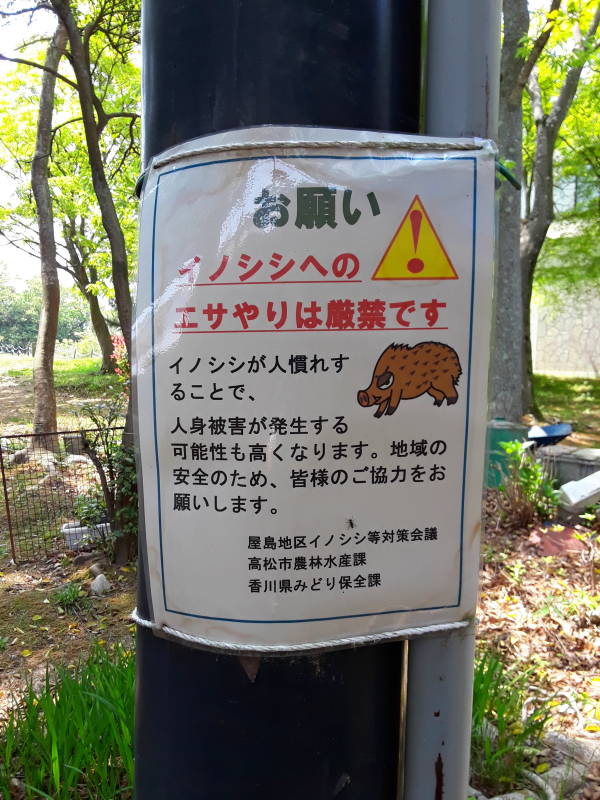
Mind the wild boars.
There's a nice view down over Takamatsu, its port, and the Seto Inland Sea from near the temple complex.
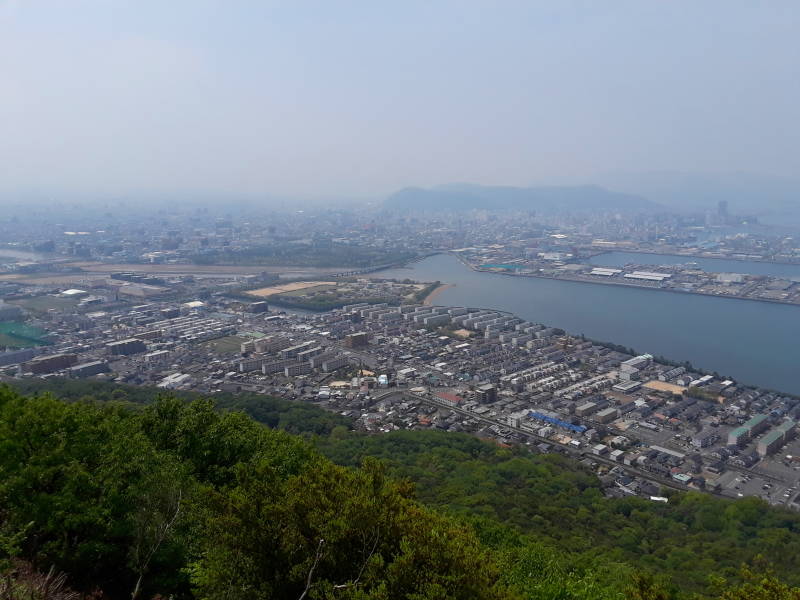
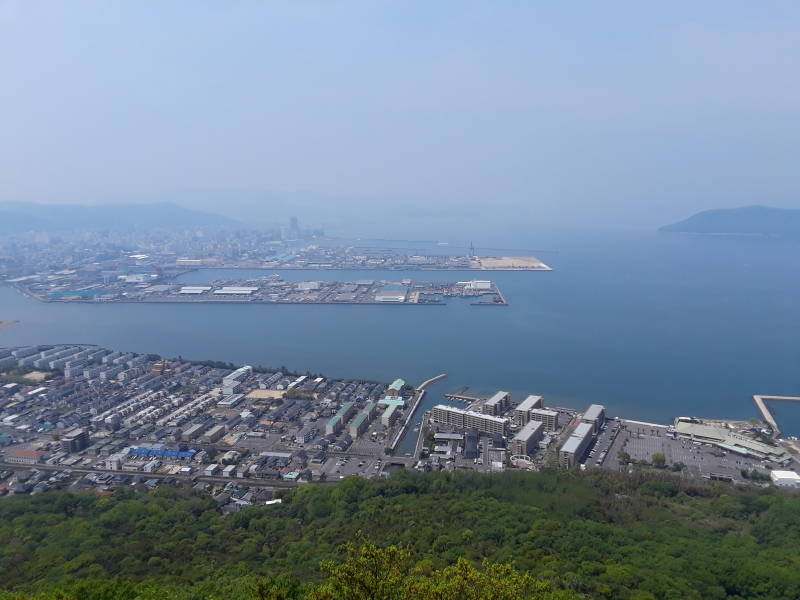

The path is mostly paved and very easy walking.

A View of the Sea
I've reached the end of the ridgeline. We're looking past the commercial and ferry port of Takamatsu, at left, into the Seto Inland Sea.

Turning to the right, that's Megijima, very close to the ferry port.
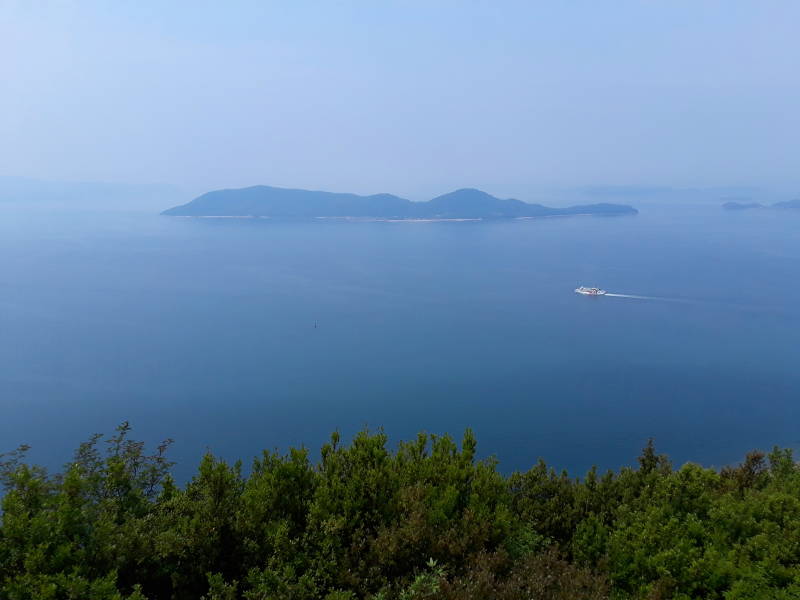
Turning further to the right, the north end of Megijima is at left, and Ogijima is at center.

And even further to the right, Oshima is the closest island to the left of center below. Fish pens extend from center to right, across the opening of a bay.

The above is specific to Takamatsu. Or maybe you want to explore other places in Japan.




































